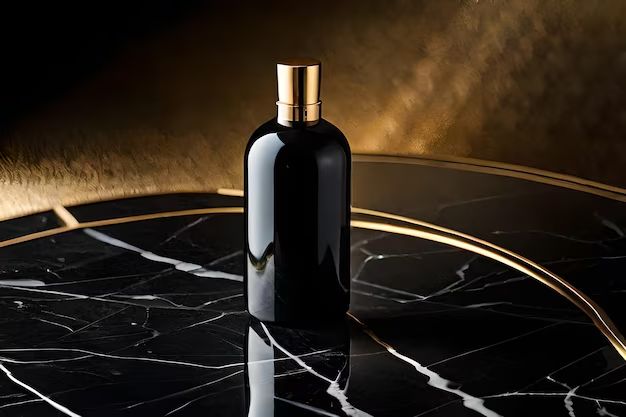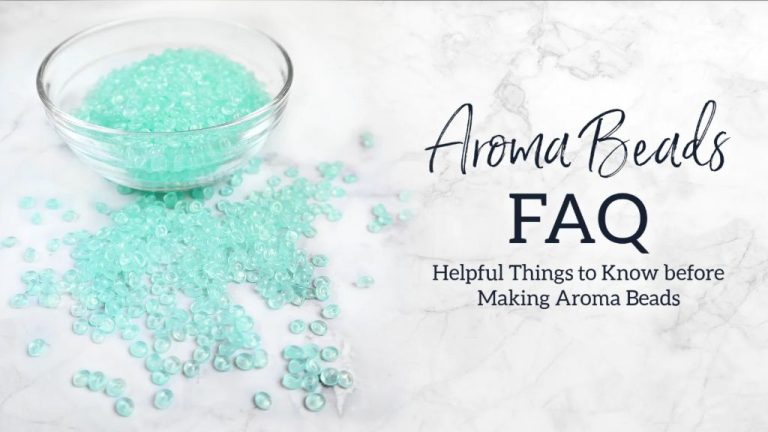What Is The Order Of Layering Perfume?
Layering perfume refers to using multiple fragrances on your body at the same time. The purpose of layering perfumes is to create a unique scent profile that complements your natural scent and enhances the overall fragrance experience. There are several benefits to layering fragrances:
It allows you to create a custom, signature scent by blending complementary or contrasting notes. Layering gives you more flexibility and creativity in how you use perfumes. You can adjust the scent throughout the day for a dynamically evolving fragrance. It also helps the perfume last longer on your skin. By layering different notes, you can highlight certain accords while downplaying others. Overall, layering allows you to craft a more complex, multidimensional scent.
The key to successfully layering fragrances is understanding how to combine notes and accords that work well together. You want to avoid layering scents that clash or create an unpleasant smell when blended. With some knowledge of perfume families and notes, you can learn to layer in harmony. The result is a scent that is uniquely you.
Base Note
The base note is the last layer of a fragrance that appears once the top and middle notes start fading away. It forms the foundation of the scent and lingers the longest on the skin – usually 2-3 hours or longer after application (https://us.shayandblue.com/blogs/journal/top-heart-base-what-does-it-all-mean). The base note rounds out the perfume and gives it more depth. It makes up 30-50% of the fragrance composition.

Common base note aromas include vanilla, amber, sandalwood, musk and oakmoss. These warm, rich scents help ground the brighter top and middle notes. Popular base notes for luxury perfumes are vanilla, ambergris, tonka bean, patchouli, vetiver and woods like cedar, sandalwood or oud (https://microperfumes.com/blog/fragrance-base-notes/). These notes add a sensual, lingering quality to perfume.
Some examples of fragrances with prominent base notes are:
- Tom Ford Tobacco Vanille – vanilla, tobacco, tonka bean
- Yves Saint Laurent Black Opium – vanilla, patchouli, coffee
- Chanel Coco Mademoiselle – patchouli, vanilla, white musk
- Dior Addict – sandalwood, vanilla, tonka bean
Middle Note
The middle note, also called the heart note, forms the core of a perfume’s scent profile. These notes emerge after the top notes fade and before the base notes appear. The middle note is considered the soul of the fragrance as it lasts the longest on the skin, typically 2-3 hours after application.
Middle notes are often floral, fruity, green, spicy, or woody. Common examples include geranium, rose, jasmine, violet, orange blossom, blackcurrant, tuberose, ylang-ylang, neroli, carnation, lavender, clary sage, coriander, nutmeg, and sandalwood. The middle note rounds out the perfume and makes it more complex and multi-dimensional.
When layering perfume, the middle note is crucial as it determines how the scents will interact once applied. A complementary middle note can enhance the fragrance while a clashing one can ruin the intended effect. Balancing the middle notes is key to creating a harmonious, radiant scent through layering.
See: The Invisible Stories – How to Talk About Perfume, Part 1: Structure
Top Note
The top note refers to the fragrances that are most volatile and the first scents you smell when applying a perfume (Note (perfumery)). Top notes consist of lighter, smaller molecules that evaporate quickly, giving you the perfume’s initial impression. They are the first notes to fade, usually within 15-30 minutes of application. The role of top notes in layering perfume is to provide the bright, vibrant opening accords.
Common top note aromas include light and crisp citrus like lemon, grapefruit, bergamot; fruits like apple, peach, strawberry; fresh herbs and greens like basil, thyme, cucumber; and florals like lavender and neroli (Top, Heart, Base – What Does It All Mean?!). These light, fresh scents form the top layer when blending perfumes.
Order of Layering
When layering perfume, it’s important to apply the notes in the correct order to allow the scent to develop properly. The order is:
-
Base note – Apply this first. Base notes form the foundation of a fragrance and often consist of rich, deep scents like vanilla, amber, sandalwood, and musk that anchor the scent. They are the longest lasting notes.
-
Middle note – Apply this second. The middle notes are considered the “heart” of a fragrance. They emerge once the base notes fade and often consist of florals like jasmine, rose, and lavender or fruits like peach, berries, and orange.
-
Top note – Apply this last. The top notes are the first impressions of a scent. They are light, fresh notes like citrus, green apples, or light florals that give an initial burst when applied but fade quickly.
Layering in this order allows the top notes to mingle with the heart and base of the fragrance so you experience the full progression of the scent as it develops over time.
Complementary Fragrances
Certain fragrance families pair wonderfully together and create harmonious layered scents. When layering perfumes, it helps to understand which fragrance notes complement each other. Some complementary fragrance pairings include:
Florals + Florals: Layering two floral fragrances can amplify the floral notes. Jasmine goes well with rose, tuberose pairs nicely with lily of the valley, and gardenia combines beautifully with peony. An example pairing is Byredo La Tulipe with Diptyque Do Son.
Florals + Fruity: Fruity top notes help lift and brighten floral fragrances. Try mixing a floral like Acqua di Parma Rosa Nobile with a fruity scent like Byredo Sundazed for a juicy, floral effect.
Woody + Spicy: Earthy woody fragrances pair wonderfully with spicy notes like cinnamon, clove and incense. Pair a woody scent like Le Labo Santal 33 with a spicy fragrance like Tom Ford Tobacco Vanille.
Citrus + Aromatic or Herbal: The freshness of citrus complements green, aromatic fragrances containing notes like vetiver, basil, mint, rosemary and thyme. Examples are Atelier Cologne Bergamote Soleil + Hermès Eau de Rhubarbe Ecarlate.
Gourmand + Fresh Florals or Citrus: Sweet gourmand fragrances are balanced by lighter florals and bright citrus notes. Try layering Kyse Bonbons au Lait with Atelier Cologne Orange Sanguine.
The key is to find fragrances with complementary accords that enhance each other and smell harmonious when layered. Testing out different pairings is the best way to find your perfect layered scent combination.
Contrasting Fragrances
Discuss contrasting fragrance families that can layer well. Provide specific examples. While layering complementary scents can create a harmonious blend, layering contrasting fragrances can provide more complexity and interest. Some classic contrasting fragrance families that work well together include:
- Floral and oriental – Try layering a sweet floral like Marc Jacobs Daisy with an oriental vanilla scent like Yves Saint Laurent Black Opium for a more multifaceted fragrance.
- Fresh and warm – Combining a fresh citrus cologne like Tom Ford Neroli Portofino with a warmer tobacco or woodsy fragrance like Tom Ford Tobacco Vanille adds depth.
- Fruity and musky – Blend a bright fruity perfume like Escada Cherry in the Air with a sensual musk like Juliette Has a Gun Musc Invisible for an intriguing mix.
When layering contrasting scents, apply the lighter, brighter fragrance first as the top note, then follow with the deeper scent. Go easy at first, experimenting with just 1-2 sprays of each until you find the right balance for your nose. The contrast should intrigue but not overwhelm.
Testing Combinations
It is recommended to test perfume combinations on your skin first to ensure harmonious layering. Skin chemistry plays an important role in how fragrances interact and meld together. Testing on paper blotters can be useful initially, but does not account for body heat and skin pH which affect how notes develop. Spray a small amount of each fragrance on wrists or forearms with a few minutes in between to allow them to settle before smelling. This will provide the most accurate impression of how the scents combine when applied in sequence. Focus on whether the fragrances complement and elevate each other, or clash discordantly. Also pay attention to sillage and longevity. Reapply as needed until you find a layered pairing that aligns with your preferences and style.
According to https://www.refinery29.com/en-us/layer-perfume-guide, testing perfume layers directly on skin is optimal, as paper blotters do not mimic body chemistry’s effects.
Application Tips
When layering fragrances, it’s important to apply them properly so the scents complement each other instead of clashing or becoming overwhelming. Here are some tips for applying layered fragrances:
- Apply fragrances from lightest to heaviest. Start with top notes like citrus or green scents, then follow with middle floral or fruity notes, and finish with base notes like vanilla, amber or musk.
- Allow each fragrance layer to dry before applying the next. This helps the scents from blending together into one indistinguishable accord.
- Use a light touch when spraying. Too much of any one fragrance can be overpowering. Start with one or two sprays of each, then add more if needed.
- Don’t rub wrists together after spraying. This can crush the top notes. Allow the fragrances to interact naturally with your body chemistry.
- Target different pulse points. Layer fragrances on places like wrists, behind ears, and décolletage to help scent blossom.
- Consider moisturizing first. Applying oils or lotions helps perfume last longer. The perfume layer rather nicely over a moisturized layer of skin.
Experiment to find what works for you. With the right combination and application, layering fragrances can help you craft a signature scent.
Conclusion
In summary, the order of layering perfume is important for achieving the desired scent. Start with the base note, which forms the foundation and lasting impression. Next, apply the middle note, which emerges once the base note fades. Finish with the delicate top note, providing the first hint of fragrance. When layered properly, the notes work together so the scent evolves throughout the day. Complementary fragrances blend beautifully, while contrasting ones add intrigue. Test combinations on skin first to find your signature scent. Apply perfume strategically and allow each layer to dry to maximize longevity. Follow these simple tips for captivating, multifaceted fragrance you’ll love wearing.
Layering perfumes allows you to create custom, complex scents tailored to your taste. Matching notes create harmony, while contrasting ones lend novelty. Properly applying from base to top note results in a scent journey that unfolds during wear. With experimentation, you can find signature fragrance combinations to suit any occasion or mood. Layering gives you versatility to express your individuality through scent.





